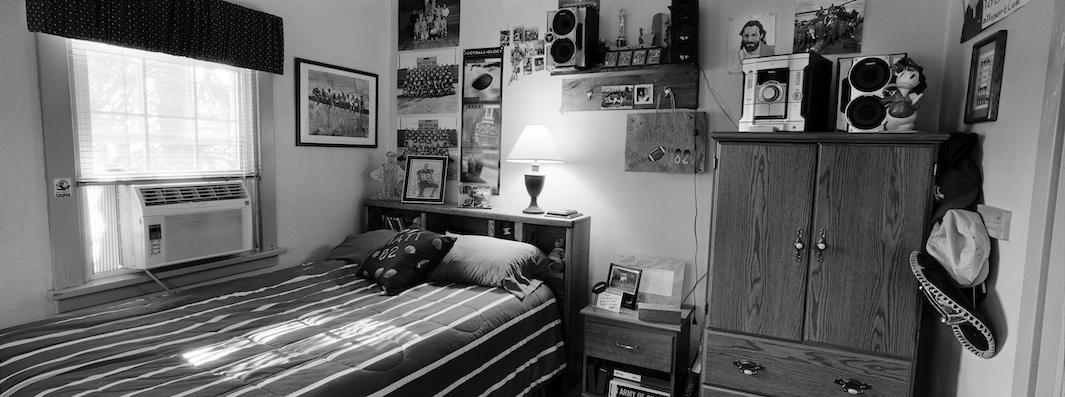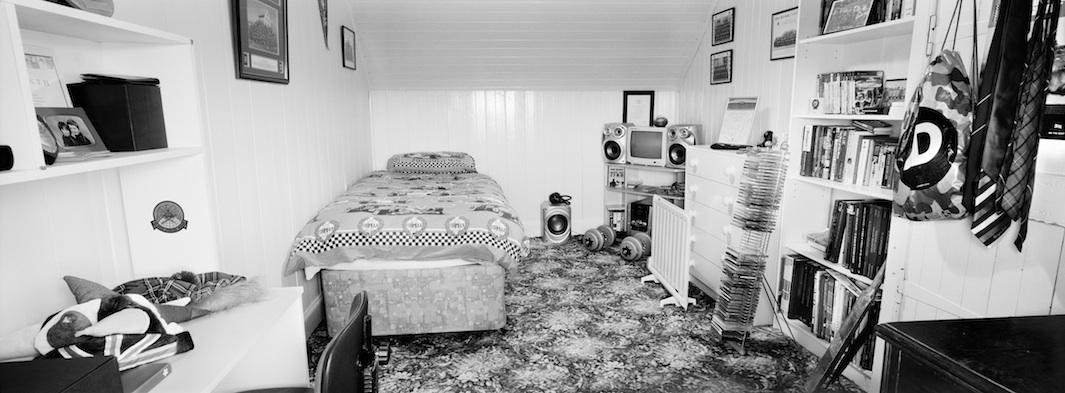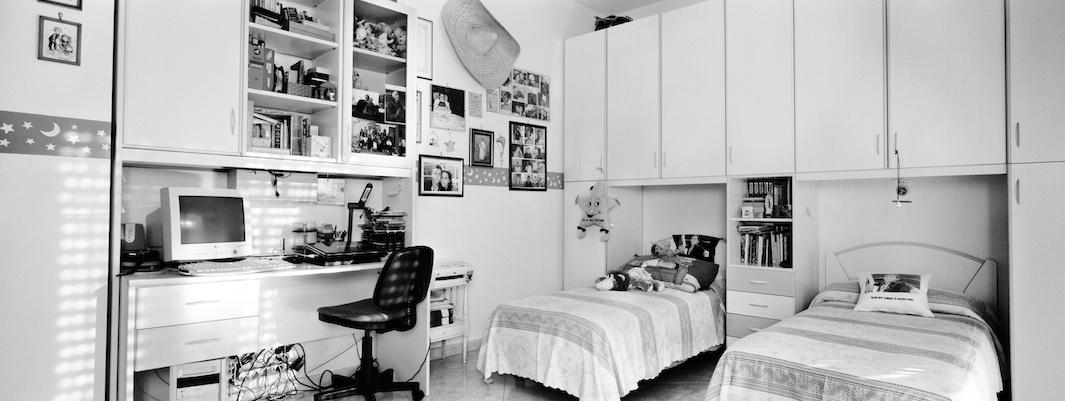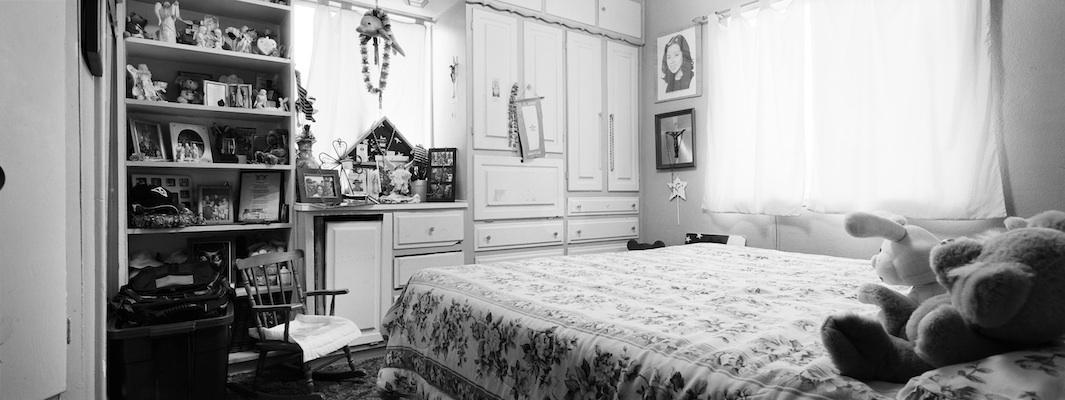Photographer Ashley Gilbertson started working in Iraq in 2002, mostly on contract for the New York Times. But the longer he stayed there, the more he felt his work wasn’t accomplishing what he wanted it to accomplish. “I realized people in the United States weren’t really engaging with what was taking place there,” he said. “I felt that we as a nation had disengaged with the war. So I started looking for different ways to tell the same story.”
When Gilbertson returned to the United States, he spent some time photographing memorials and covering issues facing veterans as he looked for a way to communicate the costs of war. But after seeing a spread in the New York Times featuring photographs of soldiers who’d died in Afghanistan and Iraq, his wife came up with the idea that he knew could have a unique impact: Photographing the bedrooms those soldiers left behind. His photos of the bedrooms of 40 soldiers in the United States, Canada, and Europe—the number of soldiers in a platoon—are now collected in the book, Bedrooms of the Fallen.

Ashley Gilbertson, Bedrooms of the Fallen, University of Chicago Press

Ashley Gilbertson, Bedrooms of the Fallen, University of Chicago Press

Ashley Gilbertson, Bedrooms of the Fallen, University of Chicago Press
In the beginning, getting access to the rooms was difficult. Gilbertson didn’t have many sample photographs to show parents and it often took several long conversations with them to get permission to photograph in their homes. The youngest soldier represented in the book was 18 when he died—the oldest was 27. “The job of parents when their child was alive to protect the child any way they could. When parents lose their child all they have is a memory and they turn to protecting that memory,” he said. “Having someone come into the home and sharing that memory with the rest of the world is a huge leap of faith.”
In some cases, the rooms Gilbertson encountered had been completely untouched. In others, parents had cleaned the room a bit or added gifts and tokens that had been sent after the child’s death. In one instance, a soldier’s father told Gilbertson he had not entered the room since his son had gone to Afghanistan. “I found out from other soldiers later on that they actually clean up the rooms a bit themselves before they go. They call it editing. They take out any things they wouldn’t want their parents to find in the event of their death,” Gilbertson said.
Gilbertson photographed in black and white and strove to make each room look as natural as possible, as though viewers were walking through the home and had stumbled upon it by accident. “I felt I was in some historic memorial. I would never touch anything. I would rarely even touch the light switch. I felt bad putting my tripod on the carpet because I felt I was disturbing something,” he said. “It’s strange—I came away from each room and I felt like I knew the kid.”
In one case, Gilbertson did know the solider: Marine Cpl. Kirk J. Bosselmann. And in another case, Gilbertson specifically sought to photograph the room of a solider—Lance Cpl. William Miller, who died in Falluja guiding Gilbertson through a mosque he wanted to photograph—but his family had already converted the room into a hurricane safe room. “When Miller died, the Iraq War transformed from something I was photographing to something I had responsibility for as well,” he said.
Bedrooms of the Fallen is Gilbertson’s way of honoring soldiers like Miller and showing others who these people were outside their uniforms. “I got really tired of these obituaries being published whenever a soldier died that always seemed like the same thing. It was basically a template. It was hard to engage with that,” he said. “The families saw this was a way of engaging.”

Ashley Gilbertson, Bedrooms of the Fallen, University of Chicago Press

Ashley Gilbertson, Bedrooms of the Fallen, University of Chicago Press

Ashley Gilbertson, Bedrooms of the Fallen, University of Chicago Press
